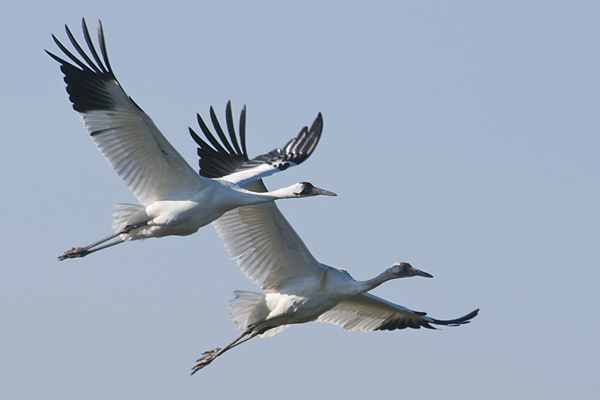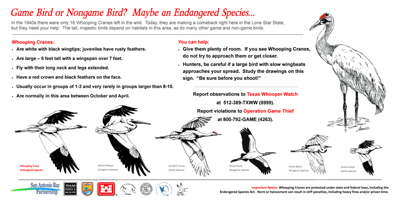The U.S. Fish and Wildlife Service and Texas Parks and Wildlife Department have announced the recent death of an Endangered Whooping Crane in Texas. With just over 300 birds in the western population, every bird is critical for the survival and health of the species. Photo by Dave & Liz Smith Media Contact: media@savingcranes.org, 608-356-9462 Only two weeks after the announcement of a tragic Whooping Crane shooting in Louisiana this fall, the U.S. Fish & Wildlife Service and Texas Parks & Wildlife Department (TPWD) have announced the recent death of a Whooping Crane in Texas, also likely due to a shooting. The crane was found on January 4, 2015 along the central Texas coast near Sand Lake in Aransas Bay. ICF is contributing to a $27,500 reward pledged for information leading to a conviction for this crime. Click here to read the USFWS’ press release. “The killing of a Whooping Crane in Texas is unforgivable,” said Dr. Elizabeth Smith, ICF Texas Program Director. “As this population struggles to survive in the face of climate change, coastal development, fresh-water shortages, and other threats, we must protect these iconic birds from senseless and preventable acts of vandalism.” In the face of such tragedy, ICF’s collaborative work with partners in Texas includes increasing public awareness of this rarest crane in the world. ICF has partnered with the TPWD, San Antonio Bay Partnership, and others to install educational signage at 18 public access areas and boat ramps within the Whooping Crane’s wintering area in the Aransas and San Antonio Bays (below, click on the image to enlarge).
|  What can you do to help? What can you do to help?Make a gift to support ICF’s Whooping Crane education and conservation efforts, and share this video, Help Us Save the Whooping Crane, to spread the word that disturbing, harassing or killing Whooping Cranes is a crime: |


